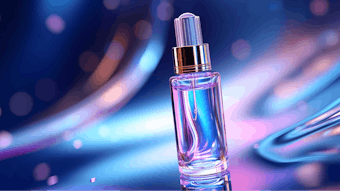In the past decade, the chemistry community has seen the resurgence of several classical chemical reactions that once lay dormant in the depths of outdated organic chemistry textbooks. Well-established since the late 19th century, these reactions were largely ignored as synthetic chemists devoted their time to the development of new synthetic methodologies to keep up with the flourishing field of natural product synthesis. Recently, a resurgence in interest surrounding these classic reactions has led to amazing discoveries in chemical biology, polymer chemistry and materials science.1 Commonly referred to as “click chemistry,” a term coined by Sharpless in 2001,2 these reactions are characterized by their robust and rapid production of highly pure products. While a daunting number of options are available in the synthetic chemist’s toolbox, click reactions are particularly useful for the cosmetic chemist as they can be performed in benign solvents, including water; they tolerate the presence of a variety of functional groups; they produce products in exceptionally high yields; and they require minimal purification.2 Starting materials are “spring-loaded” to react quickly and selectively with each other to produce single products (see Figure 1). Click reactions are widely popular in academia and are actively being exploited in drug discovery, polymer synthesis, materials science and chemical biology, but their use in cosmetic chemistry remains largely unexploited as the industry remains slow to assimilate new synthetic innovations.
Click Chemistry Toolbox
The most widely employed and well-studied click reaction is the copper-catalyzed alkyne-azide cycloaddition (CuAAC).3 The reaction utilizes a copper (I) catalyst to chemically bond an azide (−N=N+=N-) and an alkyne (−C C), producing a highly stable triazole ring (see Figure 1">Figure 2). CuAAC is incredibly versatile and can be performed in organic solvent, aqueous solutions or on solid support. The only real drawback to CuAAC is the toxicity associated with the use of the copper catalyst, which may explain the cosmetic industries’ resistance to adapting this high-yielding reaction. Often, only a minimal amount of copper is used, < 5%, and several methods exist to remove the residual copper entirely.4 CuAAC has been used in novel applications for inorganic chemistry, total synthesis, lithography and polymer chemistry.
Click Chemistry for Controlled Delivery
The topical delivery of active ingredients is of paramount importance in skin care, and often requires that the active moiety be protected from excipient ingredients that may be chemically incompatible. Encapsulation in a degradable microsphere is a popular method to safely deliver actives, and amphiphillic polymers are frequently utilized for the encapsulation of actives and/or drugs. Click chemistry allows one to prepare materials that would otherwise be difficult, if not impossible, to synthesize using conventional methods.
Recently, Isaacman et. al5 demonstrated that well-defined delivery vehicles made from biocompatible block copolymers can be readily synthesized in a modular fashion using CuAAC. Block copolymers consist of two or more distinct polymer chains, referred to as blocks, that are covalently bound through a linker. In this study, performed at the University of California, Santa Barbara, Isaacman and co-workers individually synthesized a silicone polymer block and a pseudo-polypeptide polymer block, capped with the clickable partners azide and alkyne. These blocks were then clicked together using CuAAC under mild and rapid conditions to produce an amphiphillic triblock copolymer in quantitative yield (see Figure 1">Figure 3).
The chemical linking of amphiphilic blocks through click chemistry allows for many single polymer strands to self-assemble into a variety of controllable nano-scale structures, giving rise to materials with enhanced structure and properties.6 The process emulates the natural assembly of single biological phospholipids, whereby the individual phospholipids demonstrate limited function on their own but elegantly self-assemble into a lipid bilayer with enhanced functionality.
Amphiphilic block copolymers can self-assemble into micelles and vesicles for targeted release of a payload, light responsive hydrogels, and thermally responsive materials. This can be particularly useful for the controlled delivery of topically active ingredients. The click approach utilized allowed for rapid synthesis and precise control of block-length, a critical property for controlling the morphology of a self-assembled system. These polymers aggregate into nano-scale vesicles and are currently being developed as targeted delivery agents for medical and commercial applications (see Figure 1">Figure 4).
Clicking With a Cell
A great deal has been learned about cancer by observing the surface of tumors. However, imagine inserting tracking devices within a tumor to help relay information on the inner workings of this disease. To do so, one must conduct chemical reactions in a biological system, but how can this be done with viable cells and live organisms? A special type of reaction is indeed required. These reactions must not interact with the plethora of reactive groups in a biological setting, must be stable in aqueous media at a physiological pH, and must react rapidly and vigorously, as to avoid premature removal of unreacted reagents. These types of reactions are commonly referred to as bioorthogonal click reactions,7 and they are revolutionizing the field of chemical biology.
Identifying a bioorthogonal click reaction that is stable under physiological conditions is a challenge. Azides and alkyne functional groups are rare in biomolecules and therefore largely unrecognized by an organism, thus they remain intact. However, the toxicity of copper (I) limits the usefulness of this reaction in a biological setting. To overcome this challenge, the Bertozzi group at the University of California, Berkeley, developed cyclooctynes with high degrees of ring-strain.8 These clickable reagents react spontaneously and vigorously with azides, with the release of the unfavorable ring-strain providing the driving force for this reaction, circumventing the need for a catalyst (see Figure 1">Figure 5).
These nascent bioorthogonal reactions have been used to selectively target and tag cells with fluorescent probes in vitro (see Figure 1">Figure 6). One example by Bertozzi used a two-step process that first incorporated azide-functionalized sugars into cell membranes.9 Cyclooctynes conjugated with a fluorescent molecule were next introduced and clicked with the surface of live cells, allowing them to be imaged. Though in its infancy, these bioorthogonal click reactions may prove to be useful in indentifying and treating disease. In principle, they may be used to target, tag and selectively destroy cancer cells in the body, while leaving healthy cells unaffected.
Cosmetic Applications
In order for cosmetic research chemists to discover new materials, they must be clever in designing inexpensive and effective methodologies to produce compounds that will impart novel characteristics in topical formulations. Click chemistry provides them with a toolbox of kinetically fast, thermodynamically favorable and highly selective reactions. These reactions can potentially be used to design new materials that self-assemble on skin to impart environmentally sensitive changes in rheology, color or sensation.
The concept of click chemistry has opened up a new viewpoint in academia, with a handful of reactions changing the way chemistry is approached, and placing value on the elegance of simplicity. There may be even more powerful strategies that await discovery; as the toolbox grows, so will the development of new products entering the commercial market. These simple and effective reactions await exploitation in cosmetics and skin care, and hold the potential to revolutionize the industry.
References
- J Moses, and AD Moorhouse, The growing applications of click chemistry, Chem Soc Rev 36 1249–1262 (2007)
- HC Kolb, MG Finn and KB Sharpless, Diverse chemical function from a few good reactions, Angew Chem Int Ed 40 2004–2021 (2001)
- M Meldal and CW Tornøe, Cu-catalyzed azide-alkyne cycloaddtion. Chem Rev 108 2952–3015 (2008)
- a) K Matyjaszewski, T Pintauer and S Gaynor, Removal of copper-based catalyst in atom transfer radical polymerization using ion exchange resins, Macromolecules 33 1476 (2000); b) L Leeb, P Gmeiner and S Löber, Optimization of click chemistry using azide and alkyne scavenger resins, Comb Sci 26 1145–1150 (2007)
- MJ Isaacman, KA Barron and LS Theogarajan, Clickable amphiphilic triblock copolymers, J Polym Sci A Polym Chem 50 2139–2329 (2012)
- S Förster and T Plantenberg, From self- organizing polymers to nanohybrid and biomaterials, Angew Chem Int Ed 41 688–714 (2002)
- MF Debets, SS van Berkel, J Dommerholt, AJ Dirks, FPJT Rutjes and FL van Delft, Bioconjugation with strained alkenes and alkynes, Acct Chem Res 44 805–815 (2011)
- NJ Agard, JA Prescher and CR Bertozzi, A strain-promoted [3 + 2] azide-alkyne cycloaddtion for covalent modification of biomolecules in living systems, J Am Chem Soc 126 15046–15047 (2004)
- NJ Agard, JM Baskin, JA Prescher, A Lo and CR Bertozzi, A comparative study of bioorthogonal reactions with azides. ACS Chem Biol 1 644–648 (2006)










